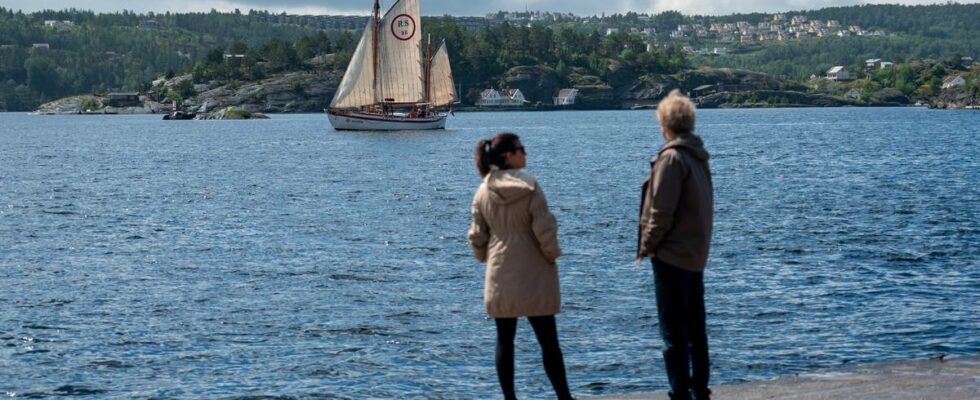The case in summary: Norway aims to preserve 30 percent of ocean areas globally, but has only preserved 0.1 percent, according to new research. Norway has reported to the Storting that around 44 per cent of Norway’s marine areas fall within the criteria for conservation, but research shows that this is only 0.1 per cent. The Norwegian Nature Conservation Union asks Norway to establish more marine protection in order to meet the target of 30 per cent. Climate Minister Andreas Bjelland Eriksen says the government is now working on which areas should be reported to the UN, and that they are taking the research report as input to this work. The summary is made by an AI service from OpenAi. The content is quality assured by news’s journalists before publication. – A good number of the lobster conservation areas can actually be registered with the UN as real conservation areas, says Per-Erik Schulze of the Nature Conservation Association, looking out over the Kragerøskjærgården. One of Norway’s 50 lobster conservation areas is located here. But a recent research report states that Norway misreports on an artificially high protection ratio of the sea. Through the nature agreement, Norway has committed itself to a goal of conserving and protecting 30 percent of marine areas globally. We are a long way from that goal in Norway, the report states. The Nature Conservancy has commissioned the report, which has been prepared by researchers at NTNU and the University of South-Eastern Norway. Finds that only 0.1 per cent is preserved The researchers have looked at one of the two criteria from the nature agreement, namely: other effective area-based conservation measures (OECM), which is what Norway can use to register preserved areas. The second is protection, which is used to a small extent in Norway today. – It has been reported to the Storting that around 44 per cent of Norway’s marine areas fall within these criteria, but we find that it is 0.1 per cent, says Glenn John Dunshea, who works as a researcher at NTNU. This lobster conservation area meets the requirements of the United Nations, explains marine biologist Per-Erik Schulze of the Norwegian Nature Conservancy. Photo: Lars Tore Endresen / news The findings therefore show that the proportion of Norwegian sea areas that can contribute to the goal of preserving 30 per cent is today far below the 44 per cent reported by the government. The 44 percent that the researcher refers to is a figure used, among other things, in several parliamentary reports from the government (at the Ministry of Fisheries): Conservationists fear that Norway will register areas where it has been opened to investigate the possibilities for seabed mineral extraction or petroleum exploration to the UN as conservationists. Photo: Map: Jon Rustand, Asplan Viak for the NTNU/USN report Asking Norway not to fool around Now the Nature Conservation Association is asking that more marine protection be established so that we can meet the target of 30 per cent: – The most important thing is that Norway is honest and tidy and don’t make a fool of themselves in relation to the international conservation environment and don’t try to claim that something is protected when it definitely isn’t, says Schulze. Per-Erik Schulze believes that Norway must step up. Photo: Lars Tore Endresen / news And the climate minister says he will now use the research report in further work: – Norway has not decided what is our conservation according to the Nature Agreement, says climate minister Andreas Bjelland Eriksen from the Labor Party. He says the government is now working thoroughly and properly on which areas should be reported to the UN in order to reach the target of 30 per cent. It should be clear in October when the UN holds its next nature summit in Colombia. The government has not concluded the reports to the Storting, which the research refers to, he sees as professional input from the fisheries administration, but he also wants to do that with the recent research. Because the government has not reached a conclusion on what should be registered as protected areas in line with the requirements set by the Nature Convention. Climate Minister Andreas Bjelland Eriksen is now working to find which areas Norway should register with the UN as protected under the Nature Convention. Photo: Milana Knežević – We take this research report as an input to that work. And then we will come back to what we will report in connection with the action plan for nature that we will present in the autumn, he says. The climate minister is clear that they are now making concrete assessments about which areas they can register as preserved, which includes protection. – But also a number of other types of measures. And that is the specific assessment that we are making now because it must be in line with the requirements required by the Nature Convention, he says. Published 02.07.2024, at 05.30
ttn-69
Norway misreports on marine protection – news Vestfold and Telemark – Local news, TV and radio

